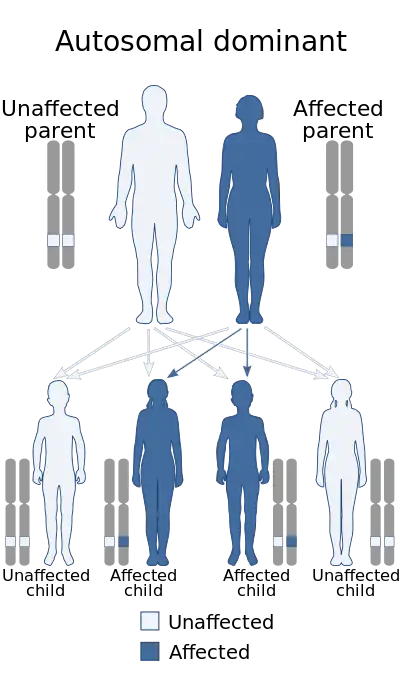Uhl anomaly
The Uhl anomaly is a partial or total loss of the myocardial muscle in the right ventricle. A congenital heart disease, it is very rare: fewer than 100 cases in 1900–1993.
| Uhl anomaly | |
|---|---|
| Other names | Parchment right ventricle[1] |
 | |
| Uhl anomaly is inherited via autosomal dominant manner | |
| Specialty | Medical genetics |
It was first described in 1952 by Dr. Henry Uhl (1921–2009) upon examining one of his patients. [2]
Three findings are enlarged right ventricular cavity without apical trabeculation with a thin hypokinetic ventricular wall.[3]
References
- "Uhl anomaly | Genetic and Rare Diseases Information Center (GARD) – an NCATS Program". rarediseases.info.nih.gov. Retrieved 28 May 2019.
- Uhl, HS (1952). "A previously undescribed congenital malformation of the heart: almost total absence of the myocardium of the right ventricle". Bulletin of the Johns Hopkins Hospital. 91 (3): 197–209. PMID 12978573.
- Cardaropoli, D; Russo, MG; Paladini, D; Pisacane, C; Caputo, S; Giliberti, P; Calabrò, R (2006). "Prenatal echocardiography in a case of Uhl's anomaly". Ultrasound in Obstetrics & Gynecology. 27 (6): 713–4. doi:10.1002/uog.2798. PMID 16710881. S2CID 28861035.
Further reading
- Gerlis, Leon (January 2003). "Uhl's anomaly" (PDF). Orphanet Encyclopedia. Orphanet. Retrieved November 16, 2010. "Summary".
External links
This article is issued from Wikipedia. The text is licensed under Creative Commons - Attribution - Sharealike. Additional terms may apply for the media files.